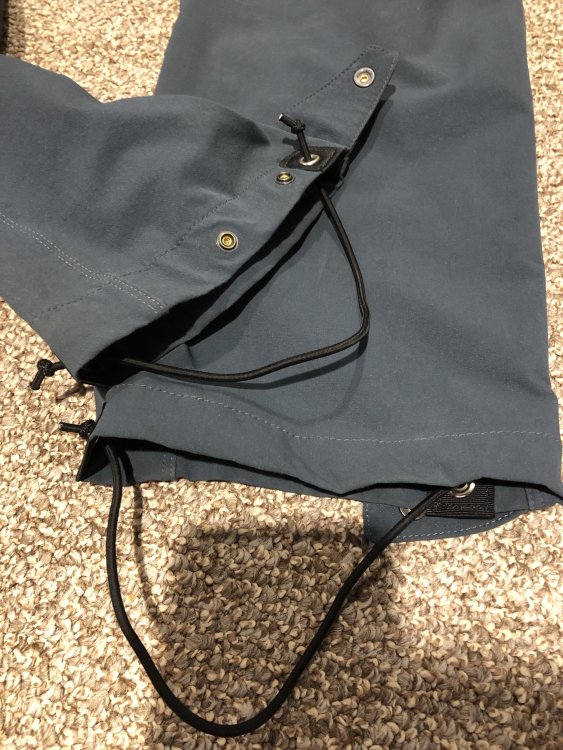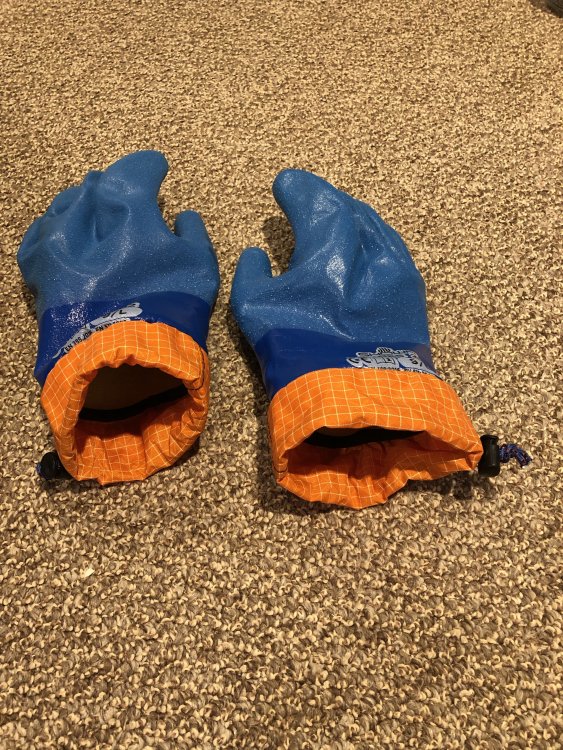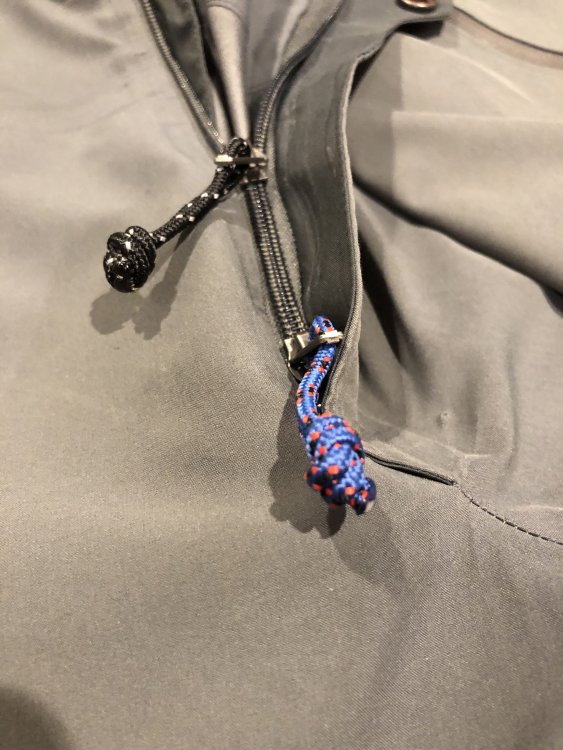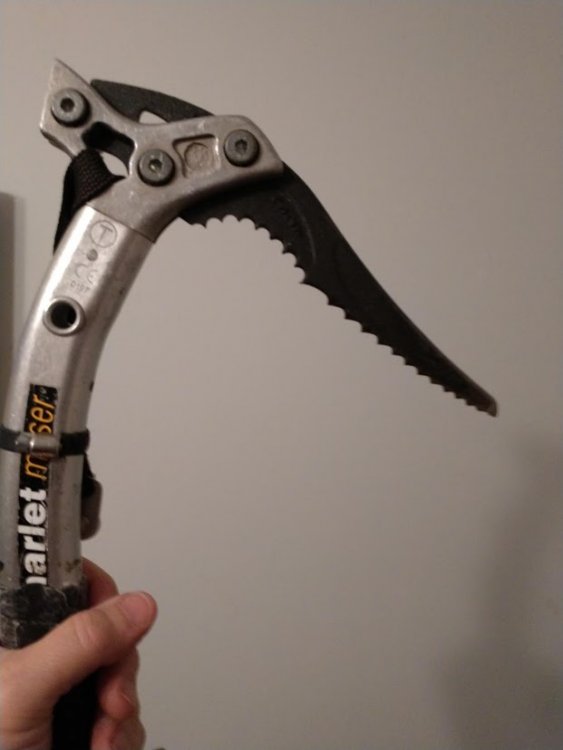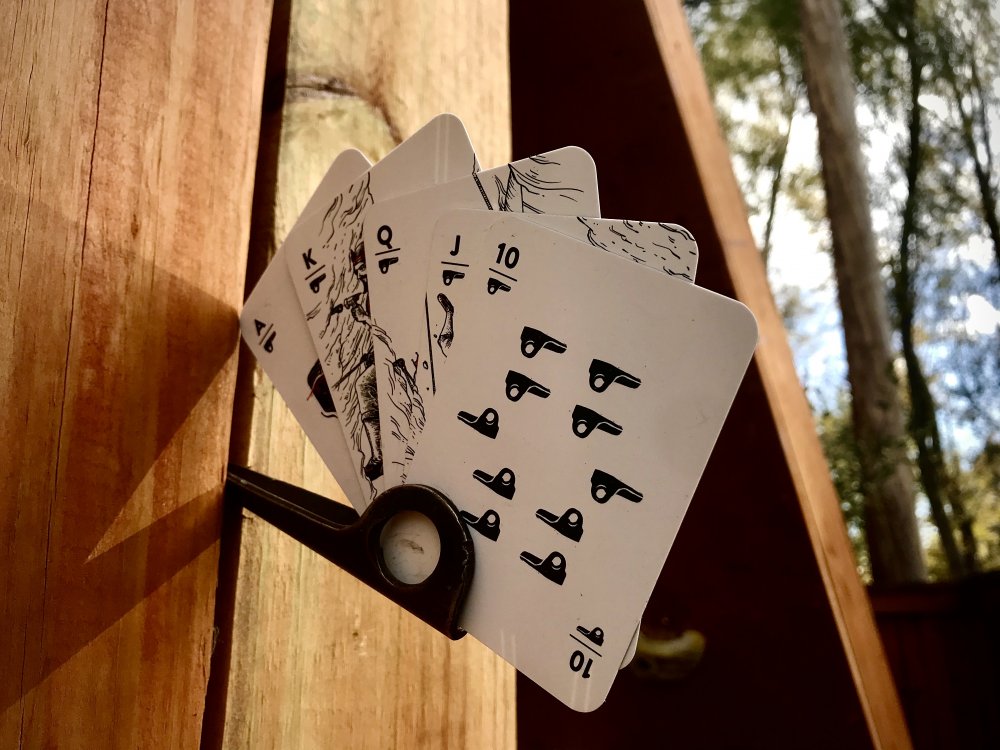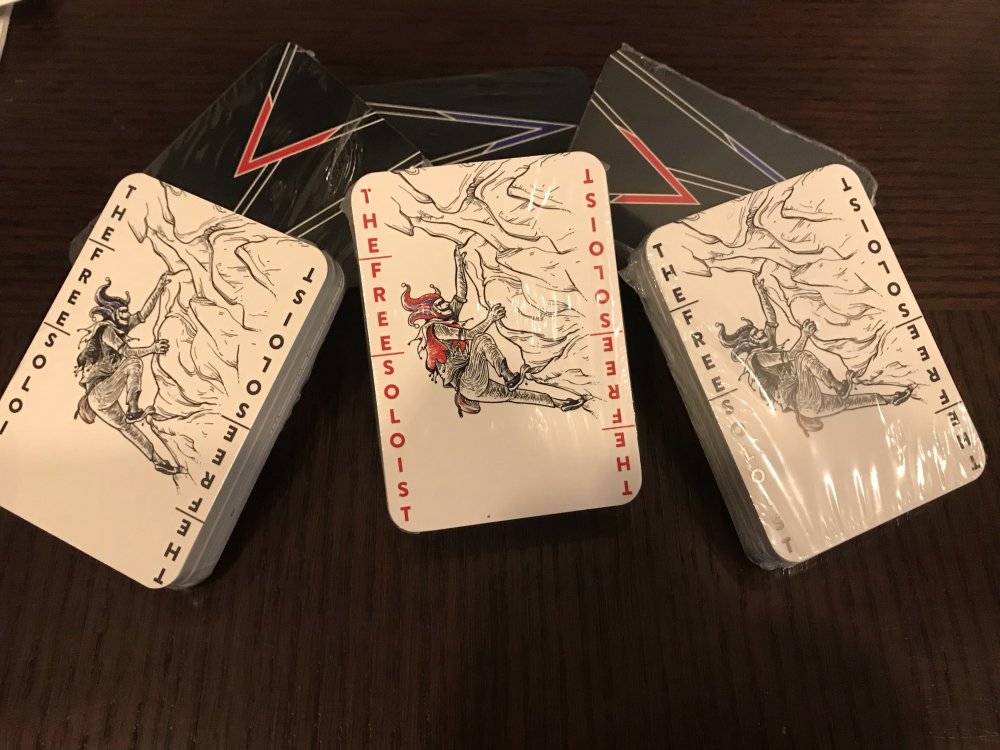Search the Community
Showing results for tags 'idea'.
-
Alright I know I'm not the only one who tinkers with my clothes or gear for climbing.... Let's see what you've done to improve a particular piece or what you've made on your own! I'll start with some easy mods I've done and if this thread gains traction I'll add some more along with gear I've made myself. Shock cord keeper on a pair of Raab pants that where lacking grommets or anything to attach the shock cord to. Posted in a glove discussion thread but here they are again. Added cinch collars to a pair of Showa TEMRES. Soon we won't have to do this ourselves though. Small detail that makes a HUGE difference. Bigger pull tabs on a pair of Patagonia Pant's zippers. Nothing worse than being at an anchor and struggling to get your fly unzipped with gloves on.
-
I know the silvretta/mountaineering boot skiing question gets asked from time to time. I know from personal experience that fixed heel skiing in mountaineering boots is horrifying. Mountaineering boots are soft enough than if your weight moves backwards, your ankles bend backwards and down you go. Its a workable concept for touring gentle terrain and I would argue still better than postholing or snow-shoeing. I was curious if anyone has experimented with making binding similar to Telemark or 3pin cable bindings for mountaineering boots? I'm imagining a wire bail similar to the silvrettas grafted in the place of the telemark toe. The benefits I'm imagining are the efficiency and touring capabilities of a 3pin or tele set up and I'm inclined to think that I could ski steeper slopes free heeled than fixed heeled with Mountaineering boots. Thoughts? Comments?
-
Just curious what everyones taking with them on winter or spring routes in the cascades. Here's my usual glove selection ill bring with me on day and over night trips: https://www.showagloves.com/showa-406?gi=7qbtt5a51oeoh1fpv7l3d8okb1#.XeAUVS2ZPow These are my main lead gloves. They are kind of in the same vain as those blue things that are all the rage now. I would be more inclined to use the blue fisherman gloves if I didn't dislike the feel of them so much. These provide a good warmth to dexterity ratio, but aren't very durable. I'm usually able to keep them on the entire day and have my hands stay warm. Towards the end of the day they do get kind of clammy on the inside. Pros: warm, waterproof, long snug cuff, very grippy, very dextrous, touch screen compatible. Cons: Don't breath that well, grip wears out after 1-3 routes which leaves them not water proof anymore, rappelling in them wears them out even faster. https://www.outdoorresearch.com/us/direct-contact-gloves-268048?cat=68,15,4 A back up mid-weight glove, haven't done too much climbing in them. I like the feel and fit of them, but I just like climbing in the Showa-406's that much more. https://www.outdoorresearch.com/us/vitaly-gloves-268049?cat=68,15,4 https://www.blackdiamondequipment.com/en/stance-mitts-BD801736_cfg.html#start=1 I usually pack either one of those to have as an extra or camp glove for overnight trips. I size the BD stance mitts a few sizes up to fit over a thicker pair of liner gloves.
-
Hey, on the off chance there's anyone still using first generation Quarks (or the Ergo Quarks) and needs new picks - you know that none of the Petzl tools use the same pick and that the original (Cascade) picks are all but unavailable anywhere. Well with a bit of work (one hole to drill and 2 minutes with a hacksaw) you can fit CAMP Awax picks to the Quark. They are a perfect match for pick length and angle and, being a smaller cross section, they penetrate ice "like buttah". I removed the hammer from my Quark, and don't miss it, but if you're a machinist I imagine you could mill out the Awax pick to allow the hammer/adze to stay in place. Best part - the Awax picks are still in stock at CAMP/Cassin and are selling for $15. At that price how can you not give it a try?
-
I wanted to get this out to the climbing community. I am working on producing rock climbing themed playing cards where I have replaced all of the traditional suits of Clubs, Diamonds, Spades, and Hearts with trad gear Pitons, Cams, Nuts, and Hexes. I also have re-illustrated all of the face cards. My personal favorite is replacing the Joker with The Free soloist. Would love any input. Here is my website: www.mtncards.cc Here is the pre-order link for the first run of decks. As of posting I have 58 decks sold and need to sell 365 decks to fund the first run. Any support is greatly appreciated. I am happy to answer any questions. www.mtncards.cc/backdoor
-
Lately I am into traditional pertex with pile clothing. Pertex is a very breathable skin that is wind/water resistant the pile under is a fleece with bumps that makes a micro climate that draws moisture away from the skin. This sort of clothing works well in varible wettish conditions, cold dry and then wet, back and forth. The UK and Scotland has weather that is similar to the cascades and British Columbia so their style and technique for clothing systems I think worth exploring. Pros of pertex pile, it is simple and tough, it pulls wetness from the body faster than anything else when generating body heat, it works wet or dry. Very good for crappy weather conditions with rough usage. Think military and SAR usage, also climbing/hikng in rain to snow to hail and back and forth.. Cons, it is more bulky and heavy than fluffy down or synthetic. Cons, most modern soft shells are close fitting and made of stretchable material which is nice, however traditional pile is the best for the creation of that dry warm microclimate at the skin ( as far as I know). To my thinking there are two basic human body types, one type sweats a lot , the other does not, I tend to sweat a lot no matter if hot or cold while hiking. I also tend to sleep cold. Some body types sweat little and sleep hot, those people hit the jackpot for alpine ability. In any case I find it is best to use a layering system even with pertex pile. No matter what clothing system or body type you want to start the hike cool to cold. This means a thin layer at the skin, the base layer. So far the best I found is the brynje thermal mesh. Synthetic material in general drys faster than wool so I favor any type of synthetic base layer. Merino wool is very good in cool damp. conditions.but nothing is very warm when soaking wet. Wool is warm when slightly damp, not so warm when wet and takes a long time to dry. In my experience wet wool gloves and socks are wet in the morning inside the sleeping bag and wet wool socks chill the feet all night. Synthetic gloves and socks are very cool when drying out in the sleeping bag for a few hours but after dried out are cozy warm. Note, fleece, pile and wool are all warm when damp, but wool drys much slower. Any of these wring and shake out much as possible before trying to dry out. Goose down. So far for me goose down is the only practical insulation for a sleeping bag and be able to carry it and be warm. I find in wet conditions with down you may only have a few days before it wets out and useless. Most trips this is ok as they are of a few days duration. If in very wet conditions then may need a synthetic insulation bag, the greater the wetness and duration of the trip, the greater the need for synthetic. Practically , goose down for a sleeping bag is the best by far for trips for a few days. Goose down puffy. It works very well. It is simple, check the weather forecast, if very low chance of rain for the trip duration, then bring it along. Know that a wet down garment insulates less than zero when soaked out, leaving you a wet cold frozen piece of meat. In the weather forecast if the greater chance of rain bring synthetic. For me if forecast is greater than 20% I lean strongly to synthetic. If I start off in rain I look lovingly toward pile, fleece, or pertex with pile. Good quality synthetic insulation puffies are good but I think pertex pile is better if you know your going to be in the wet.( personal opinion due to faster drying time for good pile or fleece, shake out water then put on). For good weather, goose down, worse weather, synthetic puffy, worst weather good pile and best fleece. Another possible system is a very hard shell with minimal under clothing. Especially if a sweat little body type, .the key here is have a thin to no base layer and a hard shell that holds little to no moisture. Think very high quality breathable hard shell or non breathable hard shell. You can basically take it off and shake it dry. The under clothes can be replaced with fresh ones at camp. Just know that it will be harder to dry out with body heat while wearing this type of clothing. The worse thing you can do is start off warm, get the clothes soaked with sweat and have several wet layers sandwiched together unable to draw moisture out, you stay wet and miserible, this can happen even with a high dollar clothing system.,. Ideally you want a system that has you cool ( even cold on the the surface skin) and mostly dry when hiking. When stopped, throw on over layer that warms you up and drys you out. That is as good as it gets. If ice climbing (stop and go) you want something more than a base layer but less than a puffy. You warm up when climbing cool down some when belaying, controlling with venting and or a over puffy. More later.
-
Hi all, I wrote up some ideas for the best gear for Alaska's environment and climate and wanted to share it with you. The laying system may be of greatest interest. https://maxneale.blogspot.com/2018/11/ultimate-alaska-backpacking-gear-list-part-one-clothing.html Cheers, Max
-
Have been tossing around an idea for a new ultralight cooking product geared towards climbing/mountaineering/ultralight backpacking. I would appreciate if some of you guys could take a little survey I made relating to the product! I will probably use the information a quick practice pitch to my entrepreneurship class (am a college student). If people take the survey or express interest and I do end up following through with my idea, I'll probably offer it on here dirt cheap first! Link to survey is below. surveymonkey.com/r/Z8Z3R2M

